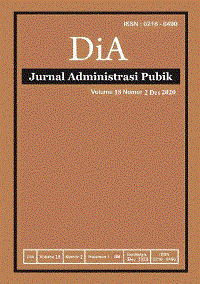EU ENLARGEMENT: TURKISH ACCESSION AND IDENTITY
DOI:
https://doi.org/10.30996/dia.v18i2.4381Keywords:
Enlargement, European Union, Turkey, Identity, CultureAbstract
Turkey is one of the most important countries for the EU because it has a strategic position in Western Europe, Eastern Europe, and even the Middle East. The good relationship between Turkey and the EU is based on history such as war, diplomacy, trade, art, cuisine, to culture. For centuries, the relationship between the two marked the deep economic, cultural, artistic, and social cooperation between the Ottoman Empire and the European powers of the fifteenth to the seventeenth centuries. At the same time, conflict and competition create an identity perception among EU countries towards Turkey. This paper attempts to explain the identity of Turkey and the European Union and to determine whether the identity as cultural or political affected the Turkish application to be a member of the European Union.
Downloads
References
Asmara, Andi, ‘Dimensi Alam Kehidupan Dan Manunggaling KawulaGusti Dalam Serat Jatimurti’, ATAVISME, 2013 <https://doi.org/10.24257/atavisme.v16i2.90.153-167>.
Bemmelen, Sita Thamar van, and Mies Grijns, ‘Relevansi Kajian Hukum Adat : Kasus Perkawinan Anak Dari Masa Ke Masa’, Mimbar Hukum - Fakultas Hukum Universitas Gadjah Mada, 2018 <https://doi.org/10.22146/jmh.38093>.
Hasan Alwai (pimred) Kepala pusat Bahasa, ‘Kamus Besar Bahasa Indonesia (Kbbi)’, Kementerian Pendidikan Dan Budaya, 2003.
Hoadley, Mason C., ‘The Leiden Legacy: Concepts of Law in Indonesia’, Journal of Social Issues in Southeast Asia, 2006 <https://doi.org/10.1355/sj21-1g>.
Kaliki, Ismail, ‘Perkawinan Dan Sanksi Adat Pada Masyarakat Negeri Hulu’, Tahkim, XII (2016).
Kamsi, ‘HUKUM PERKAWINAN ISLAM DAN ADAT DI INDONESIA’, Asy-Syir’ah, 2012
Maharsiwara, Sunaryadi, ‘Moslem in the Javanese Culture Pluralism’, Humaniora, 2006
Marzuki, S.H, M.S., LL.M., Prof. Dr.Peter Mahmud, ‘Penelitian Hukum’, Jurnal Penelitian Hukum, 2011 <https://doi.org/340.072>.
Verney, J. (2007). The Dynamics of EU accession: Turkish travails in a comparative Perspective. In Journal of Southern Europe and the Balkans, vol.9(3), December 2007.
Zentrum für Türkeistudien (Hrsg.), (1992): Türkei und Europaïsche Gemeinschaft. Opladen: Leske + Budrich.
Zeff, Eleanor E. dan Ellen B. Pirro. (2006). European Union and the Member States, USA: Lynne Rienner Publisher.
Downloads
Published
How to Cite
Issue
Section
License
The DiA journal allows authors to retain the copyright of their papers without limitation. Authors may grant publishers non-exclusive publishing rights to publish articles. Granting first publishing rights to publishers also qualifies as unlimited copyright (because there are no restrictions imposed by publishers on author copyright).






